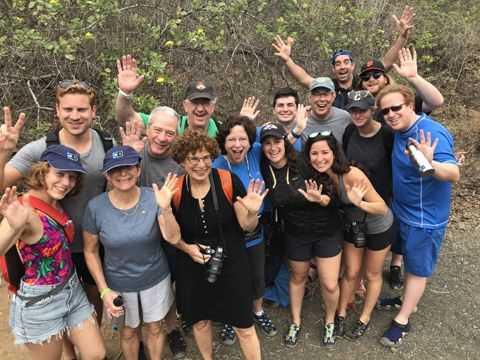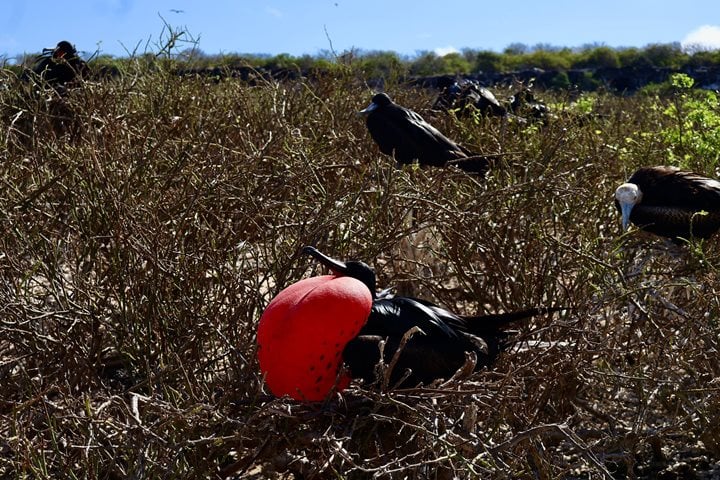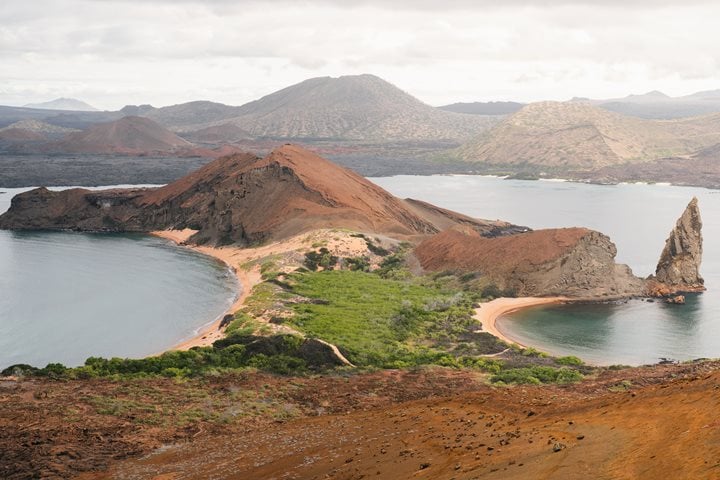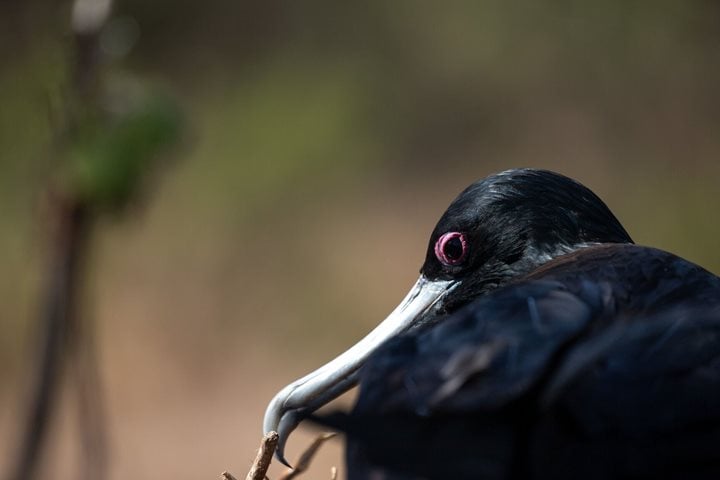Clambering off the zodiac onto slate gray volcanic sand, we are reminded not to climb the dunes lest we crush hidden turtle eggs. The shoreline is scattered with large lava rocks and proof aplenty of birds. Up the path, the island – Isabela, largest in the Galapagos archipelago – spreads before us with evergreen shrubs, sprinkled with a few tall trees. In the distance, a young Galapagos hawk peers across from its high perch. A low volcanic hill rises beyond, covered in bare vegetation. The wet season hasn’t arrived and throughout, the island is fairly dry. There’s no natural water.
Along our path lie bleached goat bones. The British imported goats centuries ago for food – an intelligent decision in their day since there was no other food source. Over time, these goats wrought havoc, and Ecuadoran men and youth hunted them for food, to the benefit of all native inhabitants.
We stand in silence, close our eyes and listen: birds chirp, carpenter bees and yellow paper wasps buzz, ocean waves roll onto the shore rocks, breaking surf, wind rustles gently through branches.
But which direction is north? We can’t tell without looking at the sun, and realize that with full cloud cover, we’d be lost. Other clues? The ocean sounds come from all around, deceiving us; perhaps the lichen on the tree? Don’t lose your guide.
A large underground burrow signals the nearby presence of an iguana with lessons of turf and survival. Seeking warm quarters from the cool night air, the iguana digs deep, then waits in reptile hibernation. The site is close to food, perhaps fruit ripening on a tree. The iguana tries to anticipate when that fruit will fall, and emerges accordingly. Often there is competition for the same fruit, and iguana battles ensue. The strongest prevails. And mates.
Across three trails, we sight three iguanas, each about 24 inches from nose to tail. Mutely colored in dusty rust, sienna and mustard, the tones are quieter than they’ll be in the wet season when all the island’s vibrancy will spring to life. Those bright colors will attract the female, promising glorious children. But is this iguana male or female? The toothy crowns tells all – male, of course. One iguana is ‘goth’: black lipstick adorns his lips, a gift of the muyuyo tree’s dark, sticky sap. That same substance is used as glue by humans, also providing a cosmetic gloss for sprucing up one’s appearance – another illustration of the male shining up to attract the female.
Alert to the poisonous apple tree, we are wary of its irritating sap. Yet this fruit whose toxin kills people passes harmlessly through the iguana. We observe iguana feces with apple intact, witnessing the methodology of the seed’s spread throughout the island.
Tortoise remains are spread on the edge of the path, its skeleton stripped of color and white as goat bones. Most interesting is the keratin shell, whose ribbed markings reveal the tortoise’s age, much like the rings of tree trunks. The older the creature, the larger is its body and shell. The most ancient ones – over 150 years – lose their markings as they trudge forward, their shells brushing under low branches, scraping their surfaces smooth.
We come upon a second hawk high up a tree, a young male calling joyfully over and again. Its wing spread is easily four feet. We pass an innocent-appearing meadow of dried grass; our guide throws a rock in and we hear an echoing thud. Hidden from view and dangerous are hollow lava tubes in labyrinthine spread beneath. Don’t tread there!
We return quietly to the beach. The younger among us splash gleefully into the cold water, diving like sea lions. We breathe deeply, drawing in the beauty of this island queen.








